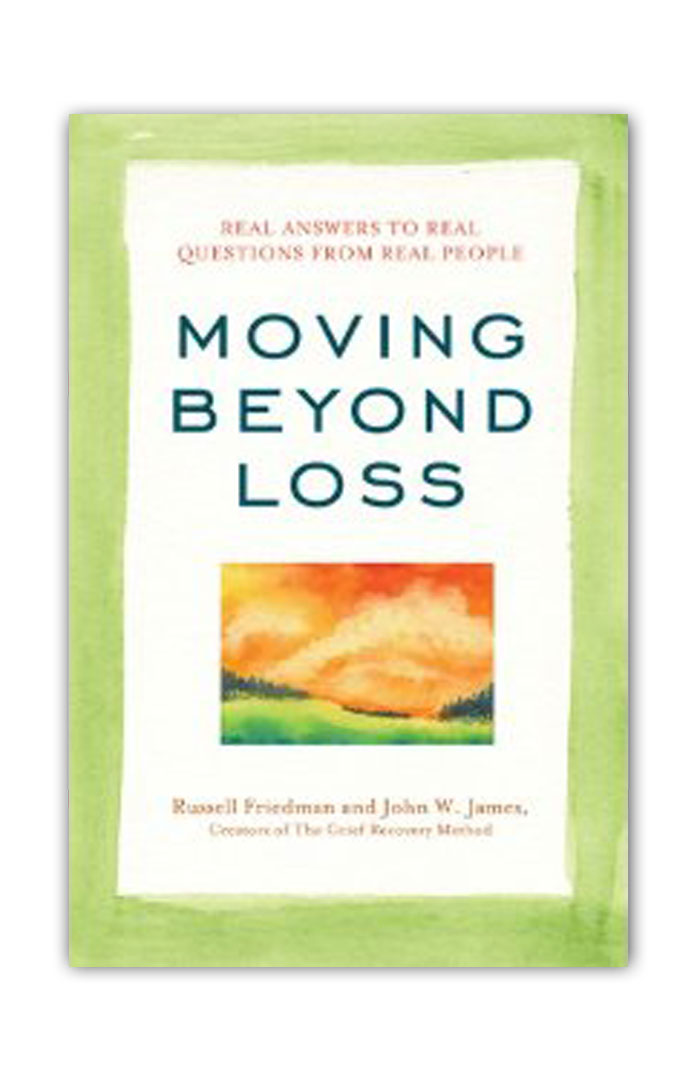On a recent trip, I hiked up the two flights of stairs to scour the 'New Non-Fiction' display. My haul included a book about the anthropology behind the paleo diet, a humorous memoir about a family's move to Vermont and, a book titled,
Moving Beyond Loss (c. 2013) by Russell Friedman and John W. James
Pulling it off the shelf, I liked the Question and Answer format of the book which is subtitled, Real Answers to Real Questions From Real People. The authors dive right into a compassionate defense of all who mourn, with the suggestion that we get a lot of confusing messages about grieving.I think this happens because:
- It is hard to see someone suffer.
- You want to help a grieving person, so you:
- give advice based on observation or experience
- box up aphorisms from books and TV
- suggest a toothache response to a life event
- give the griever "space" to work it out
Here is Friedman and James' list of 'Six Myths That Limit Us':
- Don't Feel Bad
- Replace the Loss
- Grieve Alone
- Grief Just Takes Time or Time Heals All Wounds
- Be Strong and Be Strong for Others
- Keep Busy
Don't they sound like things we've heard--and tried in response to a variety of difficulties--all our lives? I nodded my head as I read the myths. Let's look more closely at them.
1. Don't Feel Bad.
Can you recall being told 'Don't feel bad about...' since childhood? I can! So, being told to not feel what are normal and natural emotional responses to something that hurts, is absurd.2. Replace the Loss.
The authors admit that no one tells a grieving daughter or son, 'You'll get another mom (or dad,)' but they have heard countless widows and widowers recount being told that 'another spouse is out there' for them. Likewise, when parents lose a baby or young child, someone is likely to tell them 'you can have another.' You cannot replace a relationship.3. Grieve Alone.
Friedman and James recount a common childhood scolding, 'If you're going to cry, go to your room.' Yep, I've heard that one, too. So, we learn that outwardly expressing emotions is a burden to others, that's it's 'a bummer' to be around people who can't just 'park it' and join in the good times. This is why many grieving people withdraw: they don't want to offend but they can't reliably turn off or schedule the grief. This myth is a call to action for sympathetic friends.
- be a better listener
- be more inclusive and welcoming of a person in pain: 'please join us, just be yourself, we love you.'
4. Grief Just Takes Time or Time Heals All Wounds.
This is an interesting myth because it turns out that, during the passage of time, a lot happens, but it is not TIME that is effecting the healing. Everything-- tasks like sorting through a loved one's belongings, going to probate court, donating their car or collectibles to charity; and personal experiences like crying, visiting their grave, the first feeling of hope, doing something alone for the first time, talking to a minister, attending a support group...many experiences and actions make up a good grief journey. Another important point is that it will take whatever time it takes. It is not a one-year-until you-graduate process; don't lay that expectation on yourself or another person.
5. Be Strong and Be Strong for Others.
Again, the premise of this grief myth involves the suppression of feelings. That is never a healthy solution during grief or any difficulty, for oneself or others. Honest sharing--whether in a family discussion or a therapeutic setting, is very helpful to health and healing.
6. Keep Busy.
We all seek diversions and distractions from time to time. My bag of books, your DVR'd programs, his Xbox video games, their gym membership and ski trip-- these things smooth life ripples and refresh the spirit. But telling a grieving person to 'keep busy' is a quack prescription. This myth spawns from the 'Grief Just Takes Time' myth as well as the 'Be Strong' myth. Grief is not a subterranean stream that flows unnoticed until one day, it is dry and you feel good again.
 |
| "Silhouette Road" by Suzy St.John |
Friedman and James are advocates of a clear-eyed and deliberate bereavement plan. Without divulging the plan in Moving Beyond Loss, they often refer to it-- a book titled Grief Recovery Handbook. I have not read it. But I gained insight by exploring the common myths about grief, and hope you have, too.
The beautiful acrylic on canvas painting, at left, by my friend, artist Suzy St.John conveys so much about life roads. Often, we cannot see very far ahead; where will the next curve lead? As condolence writers and friends to the grieving, let us share the road with a caring heart, and remember: BE PATIENT, AND DO NOT GIVE ADVICE.
UPDATE: Please follow this link to an excellent article, Getting Grief Right, about a woman who pressured herself to "get over" her grief. In a powerful therapeutic catharsis, she learned that you can't stuff it or fake it or control it. You will gain a clear understanding of how the myths about grief are hurtful.
Share this post with a friend, and thank you for caring!

No comments:
Post a Comment